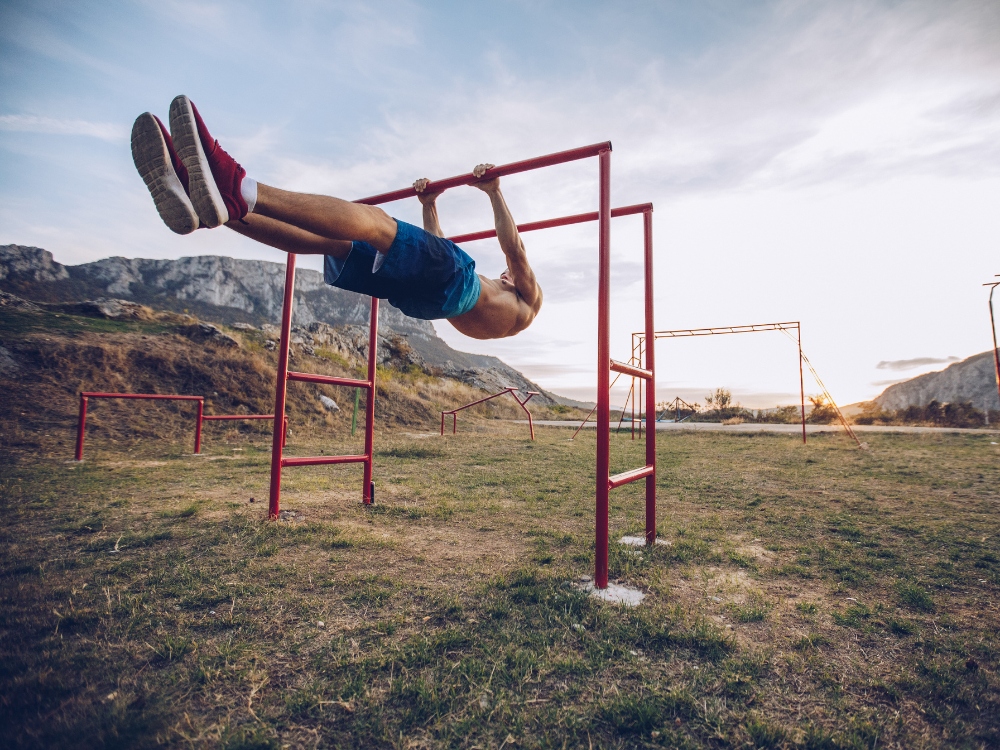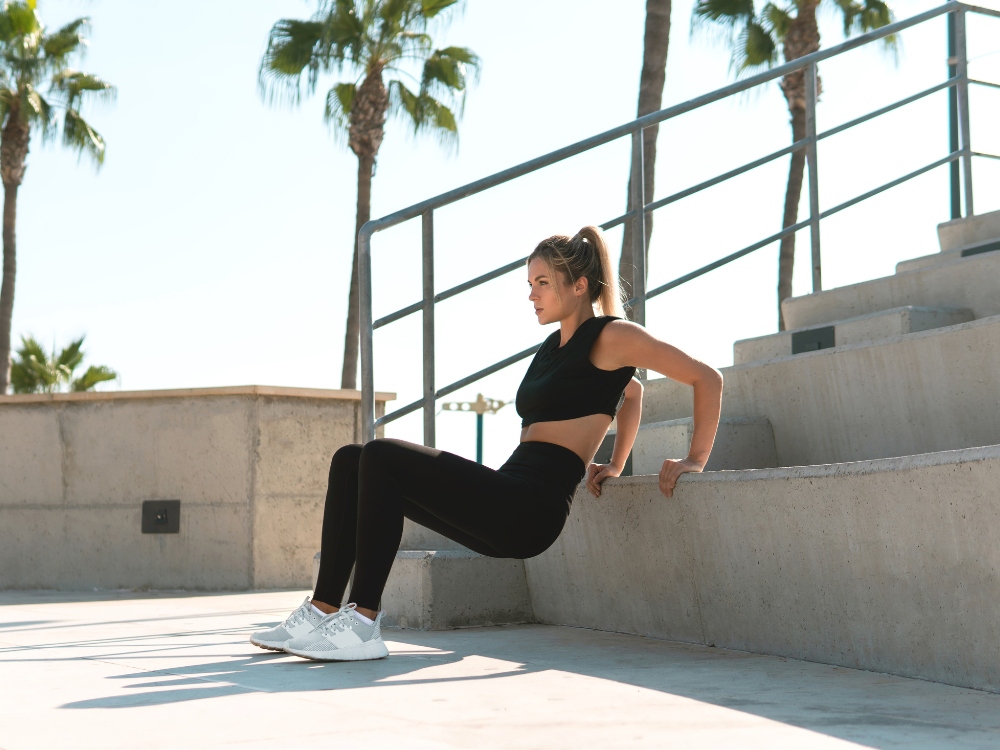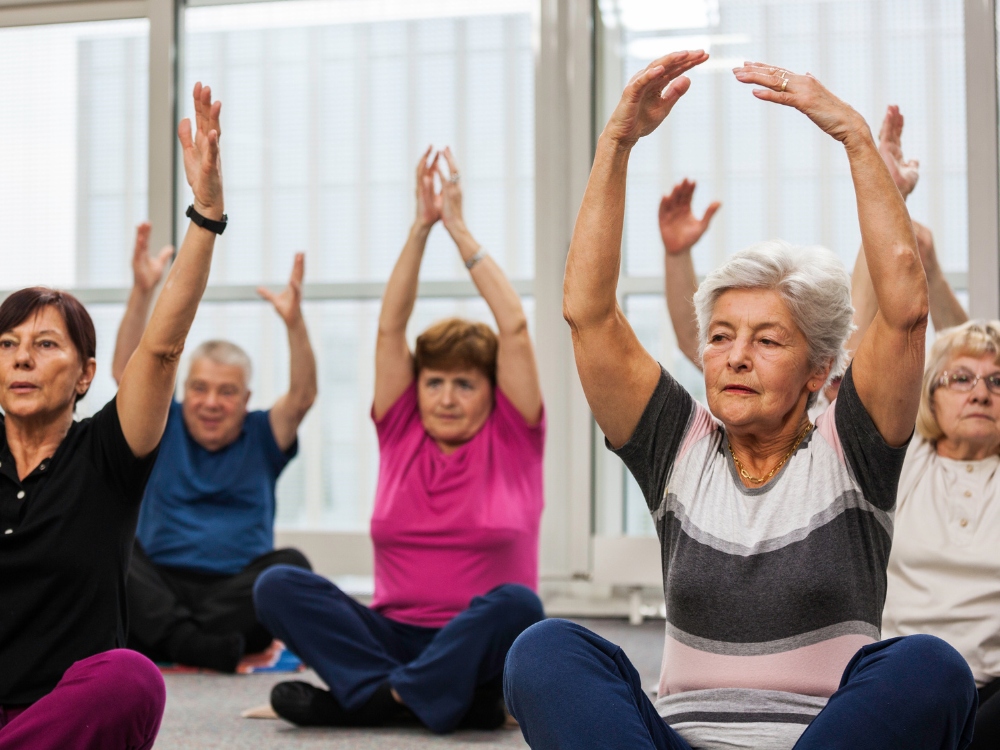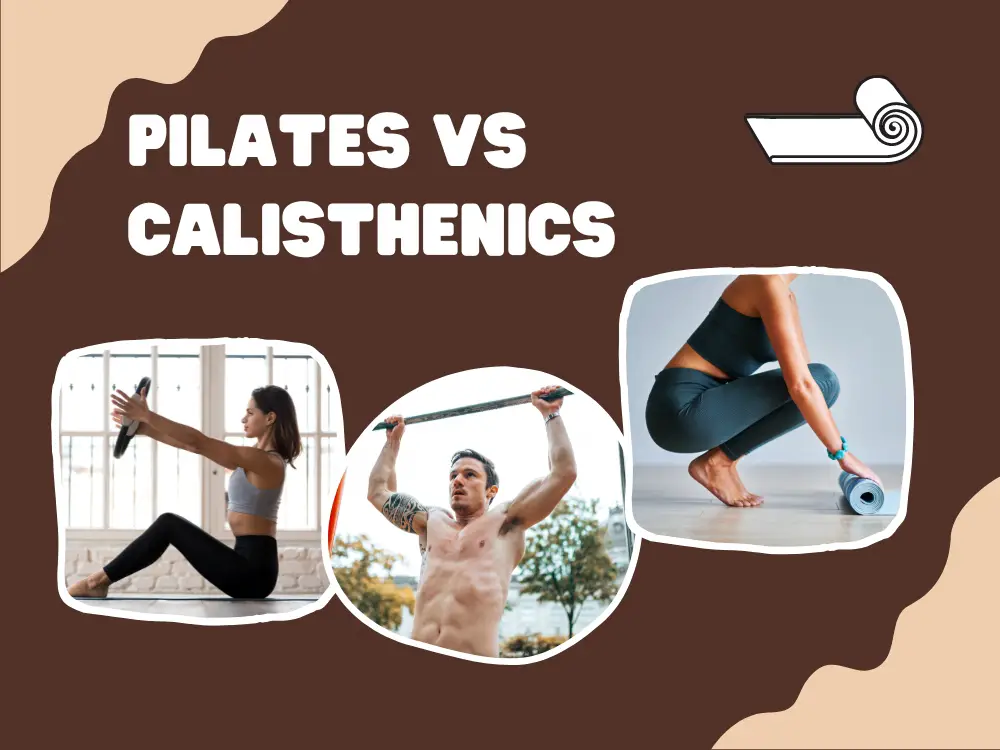The fitness world is full of options, and it can be overwhelming trying to decide which one is right for you. Pilates vs calisthenics are two popular exercise routines that have different approaches to getting in shape.
But – which one should you choose?
Here I’ll compare the pros and cons of these two methods so you can make an informed decision about your workout routine. We’ll discuss the key differences between them and explore how each discipline helps improve physical strength, flexibility, balance, coordination, and overall wellbeing.
So if you’re stuck deciding between pilates or calisthenics – read on!
Short Definition Of Pilates And Calisthenics
Pilates is a form of exercise that focuses on the core muscles and helps to improve posture, flexibility, strength, balance, and coordination. It involves slow and controlled movements with proper breathing technique.
Pilates can be practiced either in a class setting or through home-based exercises using equipment such as resistance bands and weights.
Calisthenics is a form of exercise that uses bodyweight exercises to target different muscle groups with no additional equipment required.
This type of workout often combines cardiovascular activity with stretching and strengthening moves for an all-over body workout. Calisthenics workouts can also be done at home or outdoors for convenience.
What Are The Benefits Of Pilates Vs Calisthenics?
Incredibly, there are numerous benefits of both pilates and calisthenics that make them ideal for people of all ages and fitness levels.
The primary benefit of Pilates is the increased strength it provides to the core muscles in your back, abdominals, hips, and thighs. It also helps improve posture by strengthening the body’s deeper stabilizing muscles.
On the other hand, calisthenics offers an intense full-body workout which can help build muscular strength and endurance as well as flexibility.
Both exercises require minimal equipment so you can practice either one without spending money on expensive gym memberships or machines. You don’t need any special skills to get started with either Pilates or Calisthenics; they’re suitable for everyone from beginners to advanced level athletes.
Plus, they can be done virtually anywhere – at home, in a park or even on the beach! With such incredible advantages over traditional workouts, no wonder why these two routines have become increasingly popular among health enthusiasts around the world. Now let’s explore what equipment is needed for each exercise routine next.

What Equipment Is Needed For Pilates And What For Calisthenics?
Pilates and calisthenics are two popular forms of exercise, but which one requires what equipment?
When it comes to Pilates, the only equipment you’ll need at the beginning is a Pilates mat. However, there are also some optional pieces that can be used such as resistance bands or pilates rings.
For calisthenics, all you really need is your own bodyweight! But different types of bars, gymnastic rings and other gym apparatus can also be utilized if available. You could even use items found around the house like chairs or benches to increase difficulty levels.
Additionally here’s some helpful equipment:
- Pull-up bar – strengthens upper body muscles like arms and shoulders
- Ab wheel – works core muscles through rolling out/in movement
- Push up handles – reduces strain on wrists when doing push ups.
Both offer great benefits with minimal investment, although having access to additional equipment can enhance the experience further still. So now we know what tools are necessary for each discipline let’s take a look at how they effect our bodies differently by exploring which muscles worked in Pilates vs Calisthenics?

What Muscles Worked In Pilates Vs Calisthenics?
Pilates and calisthenics are two effective workout methods that can help you strengthen your muscles. Both involve bodyweight exercises, however they target different muscle groups.
Both provide a full body workout targeting multiple muscle groups from head to toe. However, if you want to focus on developing specific areas of your body such as core strength, toning arms and legs or building shoulder strength then either one will be beneficial for its individual purpose.
With pilates focusing more on form than intensity, it allows for a wide variety of movements which can be used to target specific parts of the body while also providing great overall conditioning benefits.
On the other hand, calisthenics focuses mainly on high intensity movements which helps build muscular endurance and agility in addition to helping tone up many muscle groups throughout the entire body.
Now that we have established what muscles each exercise targets let’s move onto discussing their respective intensity levels.
Intensity Levels Of Pilates And Calisthenics
Both have different intensity levels, depending on the difficulty of the exercise. Pilates is typically a low-intensity workout, with focus on form and control rather than speed or power. This makes it ideal for those who are looking to increase flexibility and core strength without straining themselves too much.
Calisthenics, on the other hand, can be done at any level of intensity; from light bodyweight exercises such as pushups and squats to more complex movements like pull ups and box jumps. Depending on how hard you work out, calisthenics can provide an intense full-body workout that targets all major muscle groups while also increasing your cardiovascular endurance.
It’s important to consider your fitness goals when deciding which one to do. If you’re looking for increased strength and agility but don’t want high impact exercise then pilates might be the better choice. On the other hand if you’re looking for a challenging physical activity that gets your heart rate up then calisthenics may be the way to go. Ultimately, both forms of exercise offer benefits so it really comes down to what works best for you personally.
Who Should Do Pilates And Who Calisthenics?
Irony aside, it’s no secret that both pilates and calisthenics have great physical benefits for people of all ages.
But who should opt for which one? Let’s take a look:
- Pilates is better suited for those looking to improve their posture and flexibility.
- Calisthenics are more suitable for individuals wanting to build strength and muscle tone.
- Pilates may be preferred by people with chronic back pain or injury recovery needs.
- Those seeking an intensive full body workout would benefit from calisthenics as they involve exercises such as pull ups, push ups and sit ups.
- People who want a low impact routine can do either; however, pilates may work best due to its focus on controlled movements rather than strenuous ones.
So depending upon your goals and preferences, you can decide which exercise works best for you. Now let’s move on to discussing the risk factors associated with both activities in our next section.

Risk Factors To Consider In Pilates And Calisthenics
It is important to consider the potential risks associated with both Pilates and calisthenics, as any exercise can cause injury.
For example, Pilates requires engaging multiple muscle groups at once, which might not be appropriate for people who are just starting out or those with existing health conditions.
Similarly, calisthenics involves a wide range of movements that require strength and coordination, meaning it may not be safe for individuals without prior experience in physical activity.
When considering either form of exercise, it is essential to take into account your current level of fitness and any pre-existing injuries or medical conditions you may have.
If necessary, seek advice from your doctor before beginning an exercise program. Additionally, following correct technique when performing exercises is also key to avoiding injury; if unsure about proper form then consult an experienced trainer or instructor.
Frequently Asked Questions:
Pilates and calisthenics are two popular forms of physical exercise that are often compared. Both have unique advantages, and choosing one can be a difficult decision. Each provides different benefits and is suitable for different people depending on their goals.
In this section, I will answer some of the most common questions about Pilates and Calisthenics so that you can make an informed decision about which best suits your needs.
How Long Does It Take To See Results With Pilates And Calisthenics?
The amount of time it takes to see results with Pilates and calisthenics depends on a variety of factors, such as the frequency of practice and individual fitness level. Generally speaking, it is possible to see tangible results within a few weeks of regular practice, especially if you are already fit. The results you can expect to see will depend on the type of exercises you do and the intensity of your workouts.
If you are new to Pilates and calisthenics, you may find that it takes a bit more time to see results. The key is to stick with it and be consistent. Make sure you are practicing the exercises correctly with proper form and gradually increase the intensity of your workouts as your fitness level improves.
With regular practice, you should start to see results in anywhere from four to six weeks. With that being said, the more you practice, the better and faster the results you will see.
What Is The Difference In Price Between Pilates And Calisthenics Classes?
When it comes to the cost of pilates and calisthenics classes, there are several factors that come into play. Price depends on where you’re taking the class, how often you plan to attend, and what kind of equipment is used in the session.
To get a better understanding of these costs:
For Pilates Classes:
- Location: Depending on whether you take your class at home or attend an instructor’s studio, prices can vary significantly. Home workout videos may be free (like on Youtube) while private sessions with an experienced teacher could run up to $100 per hour or more.
- Frequency: Generally speaking, attending multiple classes weekly will reduce the overall cost of each individual session.
- Equipment: If you don’t have any specialised equipment for pilates then this won’t affect your budget much as basic props like mats and blocks can usually be provided by the gym or instructor if necessary.
For Calisthenics Classes:
- Location: Similar to Pilates classes, calisthenics workouts can also typically be done from home using online resources or outdoor parks but depending on the area that you live in there may also be specific gyms dedicated solely to bodyweight exercises. Prices range from completely free up to around $50/hour for one-on-one training sessions in certain locations.
- Frequency: Just like Pilates classes, attending regularly scheduled classes helps lower overall costs due to frequent attendance discounts being offered by trainers/gyms.
- Equipment: Although not essential, purchasing additional items such as gymnastic rings, pull-up bars or weights help increase difficulty levels which means more progress towards results faster; however they do add extra expenses when starting out so keep this in mind when making your decision about which type of workout is best suited for you.
Overall, both pilates and calisthenics offer great options when it comes to staying physically active without breaking the bank – just remember that realistically speaking no matter which route you choose investing time consistently over long periods yields greater returns than short bursts every now and again!

What Kind Of Injury Prevention Benefits Does Pilates And Calisthenics Offer?
Pilates and calisthenics offer a wide range of injury prevention benefits. Pilates focuses on building abdominal and core strength, which helps protect the back, neck, and shoulders from strains and injuries associated with poor posture.
Pilates also encourages mindful breathing, which can improve the overall alignment of the body.
Calisthenics is a form of exercise that utilizes body weight for resistance. This type of exercise develops strength, balance, and flexibility, which can help protect the body from injury.
It can also help improve coordination, which can help reduce the risk of falls and other accidents. Additionally, calisthenics helps to build muscular strength and endurance, which can reduce the risk of overuse injuries.
Conclusion
As you can see, Pilates and Calisthenics both offer great benefits for those looking to stay fit and healthy. For starters, it only takes a few weeks of regular practice with either program to see results in terms of strength and flexibility. Additionally, the cost of classes can vary greatly depending on your needs as well as location, so you should do some research before committing to any long-term plans.
Both programs also provide injury prevention benefits, which can be important if you have joint or muscle issues that need to be monitored carefully while exercising.
Overall, the choice between pilates and calisthenics comes down to preference – what works best for me might not work best for you. Both are excellent ways to strengthen your body safely and efficiently whether you’re just starting out or already in shape. It’s up to us to decide which one we feel more comfortable doing and stick with it over time.


